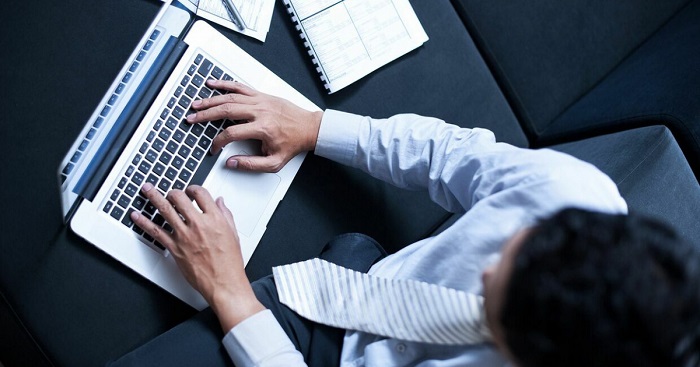Knowing how to find your IP address on a computer is essential for various tasks, such as network troubleshooting, securing your device, or managing devices on a home or office network. Your IP address serves as a unique identifier for your device, allowing it to communicate with other devices and servers. Whether you’re setting up a router, resolving network issues, or configuring a VPN, understanding your IP address is key to maintaining a secure and functional network.
In this article, we’ll guide you through several methods for locating your IP address, whether you’re using Windows or macOS. We’ll cover the steps to find both your local (private) and public IP address, and explain why knowing this information is crucial. From network troubleshooting to enhancing your device’s security, knowing how to find your IP address will help you better manage your computer’s connectivity and protect your privacy.
Why You Need to Know Your IP Address?
An IP address is essential for various tasks, from connecting to networks to ensuring your device’s security. Here’s why knowing your IP address matters:
Network Troubleshooting
When your computer encounters connectivity problems, knowing your IP address helps diagnose issues with your router, network configuration, or local network. It can be vital for resolving problems like a lost internet connection or difficulty accessing certain services.
Security Purposes
Your IP address plays a crucial role in securing your device. By regularly monitoring it, you can identify unauthorized access attempts or potential cyber threats. If unusual activity is associated with your IP, it can alert you to possible breaches, enabling you to take timely action. Tools like Whoer can help you monitor your IP address for unusual activity and help protect your privacy..
Setting Up Devices
Whether you’re setting up printers, configuring a VPN, or managing devices connected to your network, knowing your IP address is often necessary. Many devices require your IP to configure network settings or establish a connection to your computer.
Remote Access
If you access your computer remotely through protocols like RDP (Remote Desktop Protocol) or SSH, your IP address is required to establish the connection. It’s also used to control access permissions for secure remote communications, allowing you to manage your system from anywhere.
Understanding your IP address is essential for managing network operations and ensuring the security of your devices.
How to Find an IP Address on a Windows Computer?
Locating your IP address on a Windows computer is a quick and straightforward process. Follow these steps:
- Open Command Prompt: Press the Windows key and type “cmd” in the search bar. Click on “Command Prompt” to open it.
- Use the ‘ipconfig’ Command: Once the Command Prompt is open, type’ ipconfig’ and press Enter. This command will display various network configurations.
- Find Your Local IP Address: In the output, look for “IPv4 Address” under your active network connection. This will show you your local IP address, which is unique to your device within your network.
- Alternative Method via Settings: Another way to find your IP address is through the Settings menu. Go to “Settings” > “Network & Internet” > “Status.” From there, click on “View hardware and connection properties” to see your IP address listed under your active connection.
These methods will help you quickly locate your IP address on a Windows computer, whether for network troubleshooting or device configuration.
How to Find an IP Address on a Mac Computer?
Finding your IP address on a Mac is straightforward through the System Preferences. Follow these steps:
- Open System Preferences: Click on the Apple logo in the top left corner of your screen, then select “System Preferences” from the drop-down menu.
- Go to Network Settings: In the System Preferences window, click on “Network” to access your network settings.
- Select the Active Network Connection: Choose your active network connection, either “Wi-Fi” if you are using wireless internet or “Ethernet” if you are connected via cable.
- View Your IP Address: On the right-hand side of the Network window, under “Status,” you will see your IP address listed. This is your local IP address assigned by your router.
These simple steps will help you locate your IP address on a Mac, whether you’re troubleshooting network issues or setting up devices on your local network.
Public vs. Private IP Address
When learning how to find an IP address on a computer, it’s essential to understand the distinction between public and private IP addresses. A private IP address is assigned to devices within a local network, such as those in your home or office. It allows devices, such as computers, printers, and smartphones, to communicate with each other within the network without being exposed to the internet. For instance, your computer may have a private IP address that lets it connect with your router or other local devices.
In contrast, a public IP address is assigned to your router by your internet service provider (ISP). This address is used to communicate with the internet and is shared by all devices connected to your local network. External websites and servers recognize your public IP when you access them online.
Understanding the difference between public and private IP addresses is essential for various tasks. Whether you’re setting up port forwarding, troubleshooting network issues, or accessing devices remotely, knowing which type of IP address you’re working with helps optimize network performance and security.
What Can You Do With Your IP Address?
Once you know how to find your IP address on a computer, there are several practical things you can do with it:
- Remote Access to Your Computer: Knowing your IP address allows you to set up remote desktop applications, such as RDP or VNC, to access your computer from a different location. This is especially useful if you need to access files or perform tasks remotely.
- Configuring Network Settings: Your IP address is essential when configuring network settings, such as setting up a static IP for a device like a printer or configuring DNS settings. Knowing your IP address allows you to ensure that devices on your network communicate effectively.
- Security Measures: Monitoring your IP address helps in tracking any unusual activity or unauthorized access attempts. If you notice any suspicious behavior, you can take steps to secure your system, such as changing passwords or enabling firewall protection.
Knowing your IP address empowers you to manage network configurations and enhance security for both personal and professional use.
In Closing
Knowing how to find an IP address on a computer is an essential skill for every computer user. Whether troubleshooting network problems, securing your device, or configuring network settings, understanding your IP address is crucial. By following the methods for both Windows and Mac, you can easily locate your local IP address.
Additionally, it’s essential to understand the distinction between public and private IP addresses, particularly when configuring more complex network settings. Monitoring and protecting your IP address ensures a more secure and safer online experience. Always be aware of your IP settings to maintain privacy and keep your devices protected from unauthorized access.
FAQ’s
How can I find my IP address on Windows 10?
To find your IP address on Windows 10, open the Command Prompt by typing “cmd” in the search bar. Type ipconfig and press Enter. Look for “IPv4 Address” to find your local IP address.
Is my IP address the same as my public address?
No, your local IP address is private and assigned within your home network, while your public IP address is provided by your ISP and used for internet communication across all devices in your network.
How can I change my IP address on a Mac?
On a Mac, go to “System Preferences” > “Network” > “Advanced” > “TCP/IP.” Select “Using DHCP” to automatically get a new IP address. For manual setup, select “Manually” to assign a static IP address.
Can my IP address be tracked?
Yes, your public IP address can be tracked by websites, ISPs, and sometimes government agencies. It doesn’t reveal personal details but can indicate your location and device activity.
Do I need my IP address for setting up a VPN?
Yes, your IP address is essential when setting up a VPN, especially for manual connections. It helps ensure that your device is configured correctly for secure, remote access.












Leave a Reply